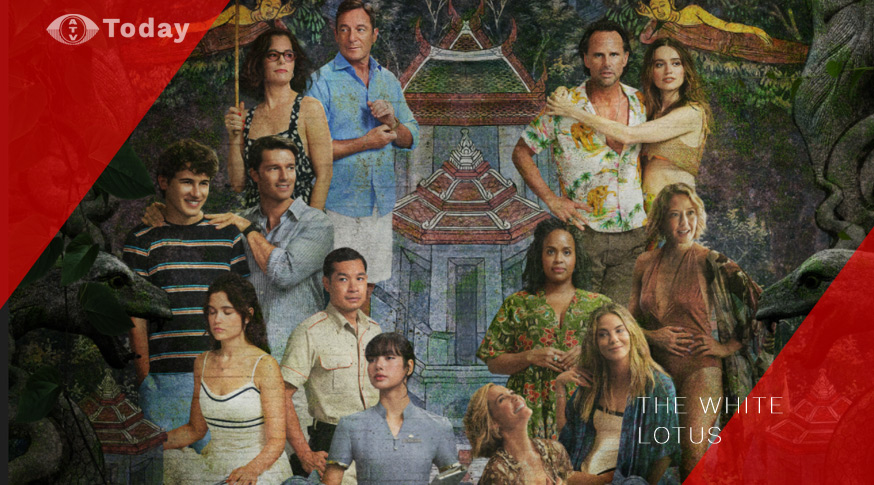
Streaming
Clinical Psychologist ponders psychological underpinnings of The White Lotus phenomenon
Beyond escapist fantasy…
As the shocking final episode of the third series of The White Lotus leaves fans divided and eagerly awaiting the next run of episodes, Canadian Clinical Psychologist and author Dr. Monica Vermani weighs in on what lies beneath the compelling allure of Mike White’s anthology series.
With its off-the-charts Rotten Tomatoes ratings, and the final episodes hitting new viewership milestones, three seasons in, HBO’s The White Lotus continued to entice, engage, and entertain audiences around the world.
Many critics and fans credit the series’ success to its more obvious attributes and conventions, including the inherent escapism of its breathtaking exotic locations, and the classic intrigue of each season’s murder mystery— by now established and formulaically teased at the beginning of each season. Others praise its wry writing and high production values for its continued success.
While there’s no arguing with success, and there is no reason not to simply just relax and enjoy a hit series for its entertainment value alone, as a clinical psychologist, I find there is much to be gained by going a little deeper and exploring the psychological subtext of The White Lotus winning formula.
While the locations of all three seasons of The White Lotus are undeniably stunning, both outside and inside the luxurious resort bubbles, real life is decidedly less than ideal, especially for viewers who can only dream of a week-long stay at a luxury resort. Among the dramatic exchanges of each seasons’ characters, we are treated to the stunning sights and sounds of exotic locations, peppered with a glimpse behind the curtain, at the disparity between the lives of people outside of the resort’s heavily guarded walls. We begin to see tourism in a decidedly unflattering light, which undoubtedly helps the majority of viewers who can only dream of such vacations feel a little better about their situations.
Even inside The White Lotus, for those who can afford the luxurious stay, life is less than perfect, despite the efforts of hard-working, earnest, eager-to-please resort staff. Though the wealthy, entitled, and self-absorbed guests indulge in daily massages, gourmet meals, and endless entertainments, they struggle with loneliness, looming crises — some real and imminent, others imagined —and a lack of joy, gratitude, and connection, that no level of natural beauty or pampering could fix.
Who would want to switch places with Timothy Ratcliff, the patriarch of a family on the verge of ruin? Who would want to live like season one and two’s Tanya McQuoid? Who would want to be Chelsea or Chloe, two young women enmeshed in unfulfilling, dead-end relationships with brooding, miserable men twice their age? Who would want to be any of the three middle-aged women on a girl’s trip laden with emotional landmines?
Here, it is the guests themselves, whose miserable predicaments never fail to deliver a high dose of schadenfreude … that heady mix of guilt and joy that us less fortunate mortals experience— but rarely admit to — when we take pleasure in the suffering of those among us with enviable lives.

The shadow, a tenet of Jungian psychology, refers to the aspects within the self that we all ignore, suppress, and hide … the less-than-admirable sides of ourselves that do not align with that we work hard to hide from ourselves and others.
Character, according to screenwriting guru/teacher Robert McKee, is revealed through choice under pressure. The greed, selfishness, lack of sensitivity to others, feelings of unworthiness, powerlessness, rage, fear, and hopelessness we ignore and suppress in real-life, we identify in the cast of characters’ choices, actions, behaviors, and interactions. Even a seemingly innocent, and innocuous character, Piper Ratliff, eventually reveals herself as a scheming, and deceptive character who lied about her academic pursuits in order to manipulate her family to serve her own selfish ends. Along with her self-absorbed older brothers and mother, she remains oblivious to her father’s deteriorating physical and mental state.
Back to the three seemingly happy and fulfilled women, friends since childhood reuniting for a girl’s trip. It is not long before their interactions reveal long-standing resentments, rivalries, and shifting alliances expose darker aspects of each of the three friends.
Then there’s Rick, on the surface, a successful, benign middle-aged man enjoying the fruits of his labours, on vacation with his younger girlfriend. Through her eyes he is generous, kind — if somewhat noncommunicative —loveable, and fixable. Through his actions, he reveals himself as a dangerous man trapped in a vague, broody, sad-sack psychic fog. Through his intentions, he is something even more sinister, a self-absorbed, vengeance-seeker.
Sweet Mook, the object of security guard Gaitok’s affection, reveals her unsavoury side when she admonishes Gaitok for lacking the killer instinct. By the end of the final episode, Gaitok has revealed his shadow through choice under pressure, when obeys the orders of his resort owner boss, Sritala he shoots Rick in the back. Mook looks on lovingly as Gaitok drives off with Sritala, who has promoted him to the position of her bodyguard.
Not all shadows are sinister and dangerous. Late in season three, a somewhat admirable shadow side of Saxon Ratliff emerges when he turns down the opportunity to fulfil the sinister Greg’s voyeuristic sexual fantasy. The egocentric Saxon appears to have a soul, or at least lines he is unwilling to cross.

For viewers such revelations trigger catharsis, described perfectly in Britanica.com as the purification or purgation of the emotions … through art. In other words, when we see the shadow selves of the show’s characters, we experience a catharsis and are compelled to look deeper into our selves.
The White Lotus is something of a rare species in today’s collaborative world. It is the work of a single creator, writer and director. Its repeating use of soothing sounds and sights of nature, its deliberately unhurried, contemplative place invites viewers into its meditative space. By the end of each Sunday evening’s episode, we feel less burdened, blissful in mind, body and spirit. Just in time for one last sleep before the busy work week begins, we’re relaxed and eager for more.
Back to screenwriting guru Robert McKee for a moment, this time for his view on the components of a good story … something that begins with an interesting premise … in this case, a jarring incident destroying the veil of a peaceful paradise. Next, according to McKee, the story then builds logically. The White Lotus delivers on this with its masterful and measured revelations of the darker aspects of characters through their actions. Finally, according to McKee, a good story concludes with a satisfying and surprising conclusion.
As season three opens with a shooter on a rampage, it hints at the possibility of more than one victim at the end of the week-long sojourn. The season ends with not one, but 5 corpses in body bags, delivering an ending that indeed surprises, and satisfies, and gets viewers talking.
As any clinical psychologist will tell you, as human beings we are hard-wired for connection. One of the most compelling and impactful ways we learn, connect with, and relate to others is through the stories we share. Must-watch movies and TV series, like folk classic tales, great works of fiction, and works of art, provide us with a sense of interconnectedness, and keep us coming back for more.
One of Canada’s highest-rated clinical psychologists, Dr. Monica Vermani is a TEDx speaker, teacher, and author in the field of mental health and wellness. In her private practice, Dr. Vermani provides a multi-faceted treatment approach in treating adolescents and adults suffering from trauma/abuse, mood, anxiety, substance addictions, and other related conditions and disorders, as well as family and couples therapy.
Her latest book, A Deeper Wellness: Conquering Stress, Mood, Anxiety, and Trauma, provides readers with evidence-based strategies and tools to create a deeper, more authentic, and enduring sense of well-being.










